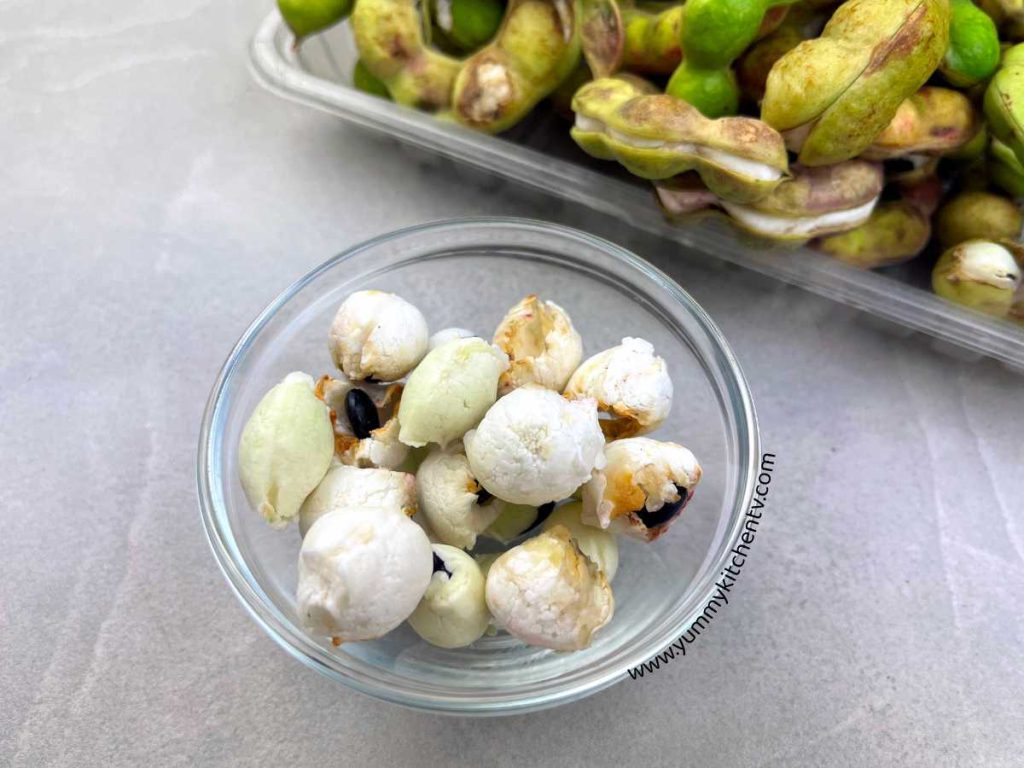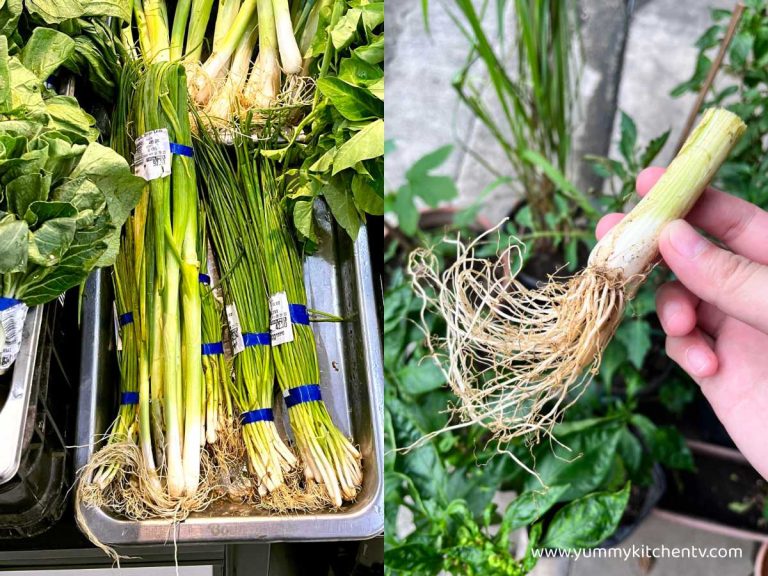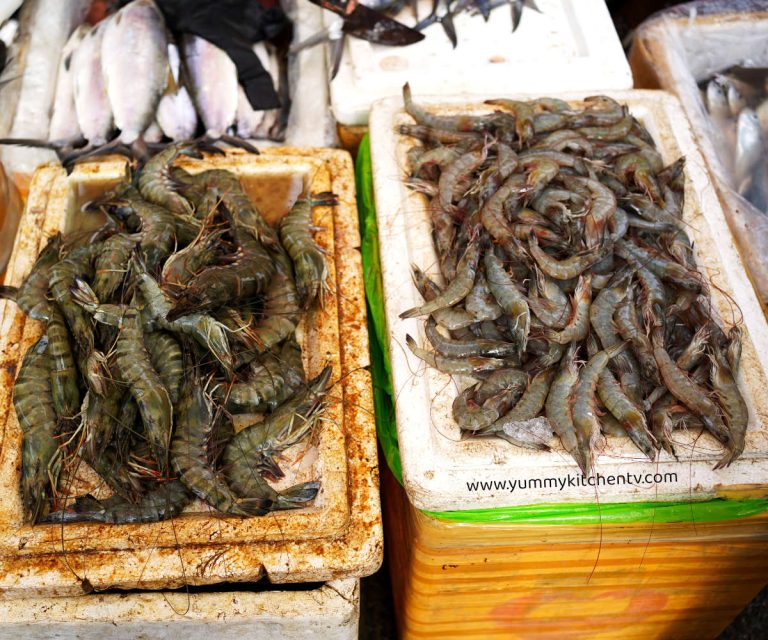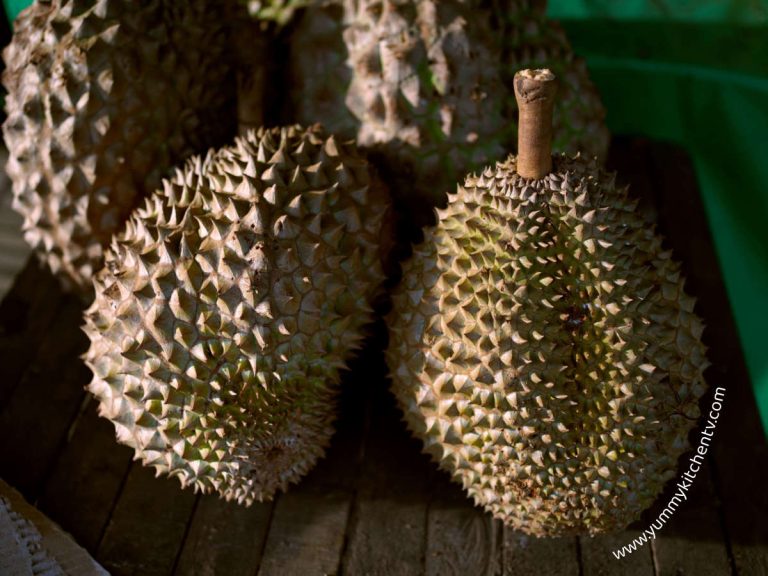Kamachile (Manila Tamarind)
The Kamachile, also called the “Camachile fruit”, “Madras Thorn”, or “Manila Tamarind” is a tart yet sweet fruit that looks like a connecting seed pod or thick green caterpillar. Part of the Flowering Pea family, this species has a novel taste eaten raw or added into dishes for a sweet acidic touch. Growing in most tropical parts of the world, this leguminous tree is mostly eaten for its big range of health benefits.
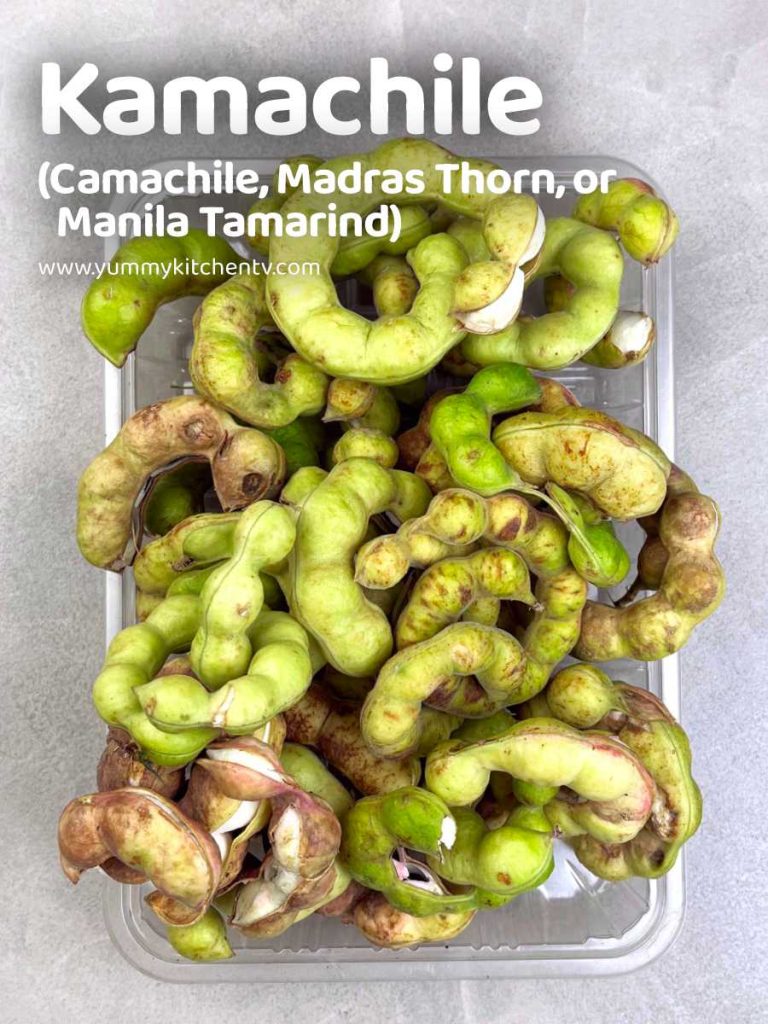
A short Introduction
The ‘Kamachil’e in Tagalog, or also called and spelled “Camachile” pronounced ‘ka-ma-chi-ly’, or “Huamuche or Guamuchil” in Mexico, “Opiuma” in Hawaii, “Madras thorn fruit”, “Monkeypod Tree” or “Manila Tamarind tree” in English, with the scientific name “Pithecellobium dulce”. Is a flowering species from the pea family that does not really have any relation to the tamarind. Even though it does have a similar shape and is close in taste, being sour but still a bit sweet. It can be found in the Pacific coast, northern South America, Central America, and Mexico. They are naturalized in areas such as the Philippines, Florida, Caribbean, Thailand, Guam, Hawaii, most of South Asia which were introduced and brought during the Manilla galleons.
Sometimes seen as an invasive species, the Camachile tree is drought resistant and can grow to a height of 15 or 18 meters, has pendulous branches that have stipular spines that are short and sharp, small green leaves, and dense white flowers that slowly turn into pink to light green fruit pods, each having 6 to 8 seeds wrapped in white edible flesh inside. It is considered invasive due to birds eating the pulps while dropping the seeds randomly.
As a food source, these are eaten raw in the Philippines, India, Mexico, Qatar, and Pakistan, or added as a base drink mixed with sugar. Some also produce oil from the seeds to be used as an edible source of fatty acids, but are still being researched further to be able to feed them to livestock. Medically it is used as an astringent in India, to treat gums and teeth problems in Mexico, in some parts of the world it is used to to prevent or cause abortions, clean ulcer, avoid tuberculosis, hemorrhages, or diarrhea. Though Sri Lanka has avoided these as it can cause eye infections. Within the production technology of manila tamarind, this street tree is used for construction, boxes, but cannot be used for fuel because it creates too much smoke.
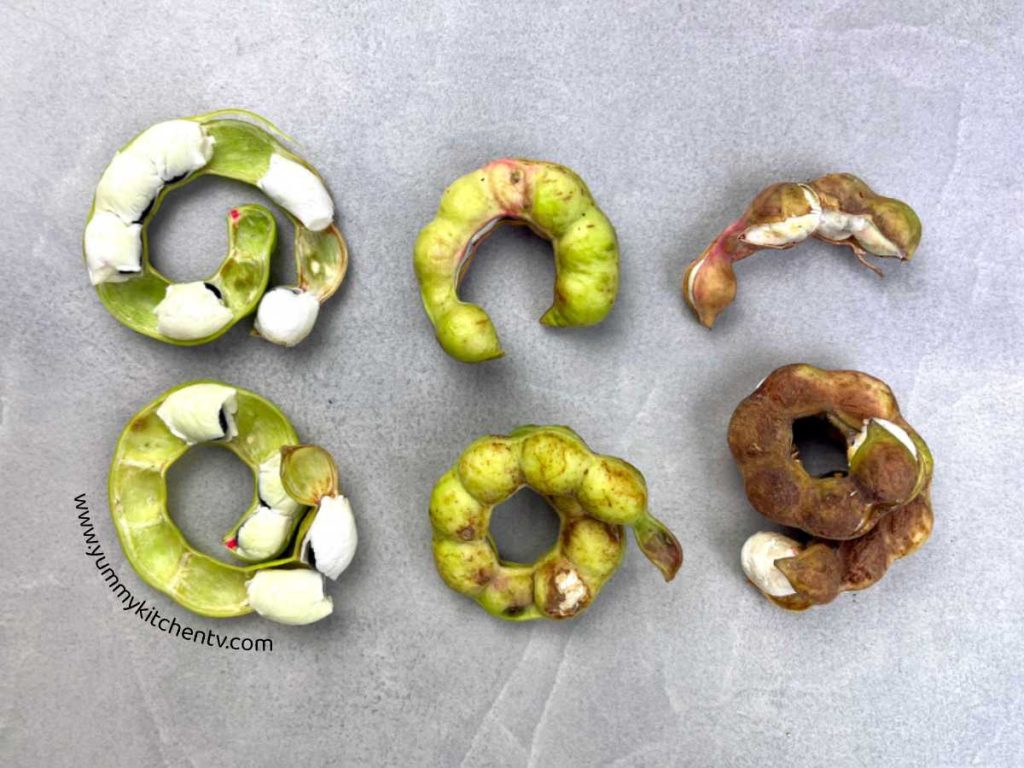
Camachile fruit benefits (Manila Tamarind fruit Benefits)
Manila tamarind nutrition facts (for 1 100 grams of serving) consist of 77.8% of water, 3% protein, 18.2% Carbohydrates, 1.2% fiber, a small amount of ash, and fats, making the Manila Tamarind calories around 78. Used as Asian folk medicine by taking the extract from the fruit, seeds, leaves or branches, here are some benefits you can have around this fruit:
- Is said to aid diabetes, as it regulates sugar levels in the body which boosts and maintains the level of insulin in the patient.
- Helps keep you hydrated after dysentery or diarrhea.
- The leaves are used to create a paste to apply topically on wounds or sores as it has anti-inflammatory properties.
- Because it is anti-inflammatory it helps with hemoptysis that are the result of tuberculosis, lung cancer, pneumonia, or bronchitis.
- Improves one’s cognitive function by balancing oxygen in the head and increasing red blood cells. Especially great for growing adults to prevent dementia, Alzheimer’s, or Parkinson’s.
- Is manila tamarind good for pregnancy? Manila tamarind during pregnancy is not that recommended or is said to not be allowed especially during the first trimester, after that one can only have indulge in a very small portion to enjoy.
* Manila Tamarind side effects: the kamachile acidity might cause people some digestive issues or wear down the enamel of your teeth. For some this might also cause allergic reactions especially to those who also cannot eat tamarind.
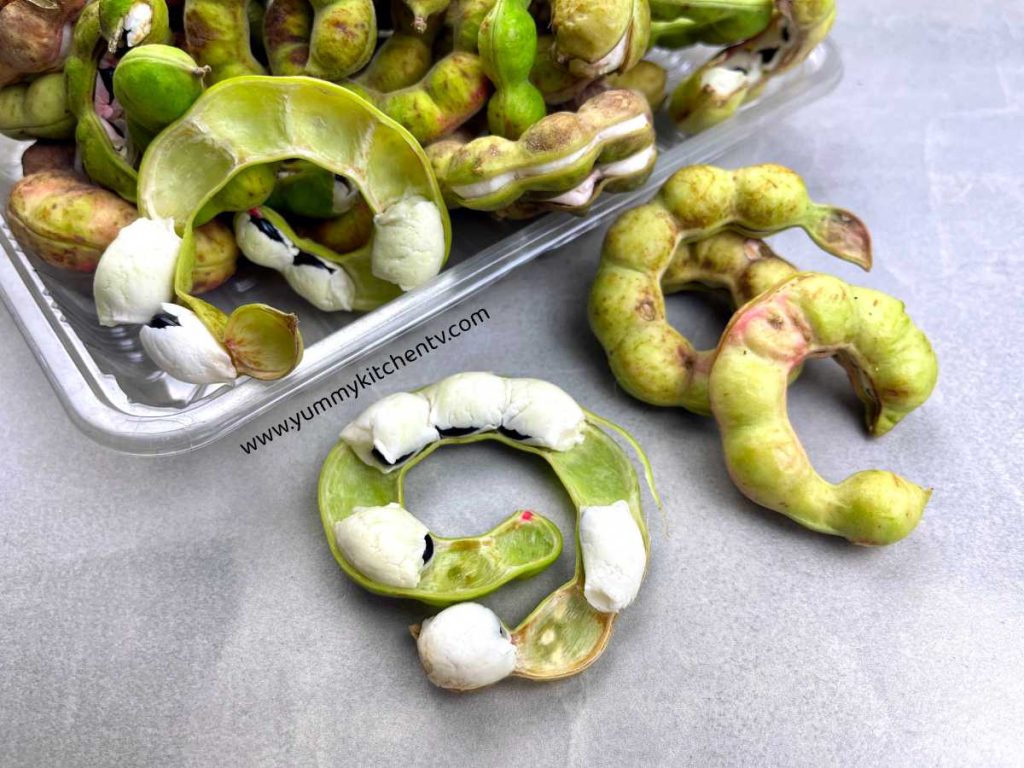
Manila Tamarind (Kamachile) in the Philippines
They can be abundantly found in low and medium altitudes within the Philippines. Called Kamachile with the name changing depending on the province for example ‘Kamantiris’ in Ilocano and ‘Kamunsul’ in Hiligaynon, and even spelled ‘Kamatsile’ which translates to ‘Sweet tamarind’ in English. A multi-purpose tree that is mostly found in rural areas, sometimes just along the countryside highways, with many having fond memories of the fruit. Simply eaten raw with the seeds thrown out, or the flesh/pulp processed and juiced into a drink similar to lemonade, some even add them into sinigang as a tamarind substitute, in Ilocos the pods are cooked in a local dish called ‘inabrao’, and prescribed to those with diabetes as natural medicine.
